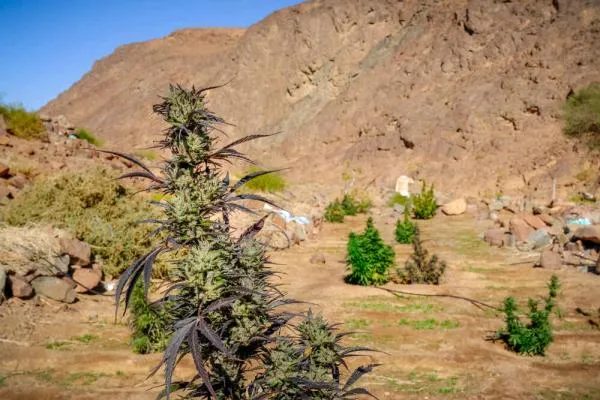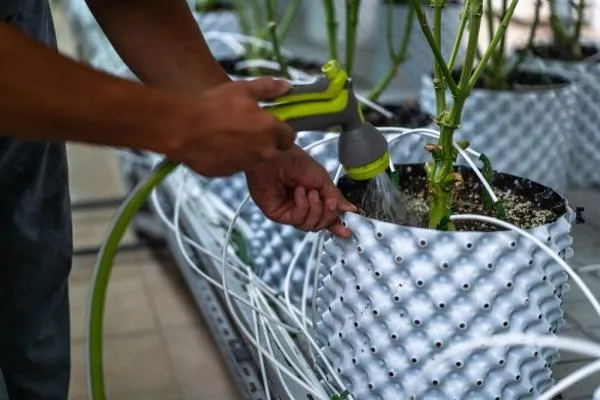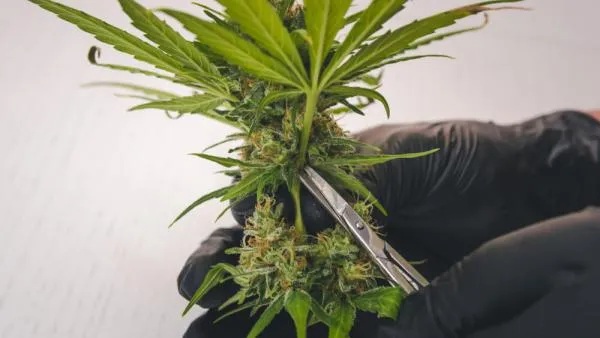One of the most recent debates to come up amongst home cannabis growers: autoflower vs photoperiod plants. Especially as the quality of autoflowering genetics improves over time. Even more, both autoflowering vs photoperiod seeds are readily available for purchase, and each has its own unique benefits and traits. So, how is one to decide which is best for them? Keep reading for our complete breakdown of autos vs photos, and the top factors to consider when choosing which is right for you.
The Basics of Autoflowering vs Photoperiod Genetics
As a quick refresher, let’s first understand the basics of autoflowering vs photoperiod in general. Autoflowers, genetically contain cannabis ruderalis traits. The subspecies that grows wild and does not depend on light cycles to bloom or flower. Conversely, photoperiod cannabis plants require a light cycle of at least 12 hours of darkness, and 12 hours of light to begin flowering.
Of course, beyond light cycles there are pro’s and con’s for both photoperiod and autoflowering plants. So those should be factors to consider right off the bat. In general, here are some of the top advantages and disadvantages of autoflowers vs photoperiods for beginners to be aware of.
Autoflower Pro’s and Con’s
Pro’s
- Autoflowers are ready to harvest in 2-3 months.
- Autoflowering plants do not require any light cycle change.
- They are more rugged hardy plants and can handle colder conditions.
- They are smaller and more compact which makes them ideal for indoor home growing.
Con’s
- Autoflowers typically yield less.
- Autoflowers can handle LST (low-stress training) but are sensitive to other more high stress training methods such as topping and fimming.
Photoperiod Pro’s and Con’s
Pro’s
- Photoperiods are much bigger yielding cannabis strains.
- Can implement a variety of training methods for higher yields.
- Landrace, heirloom and OG genetics available.
Con’s
- Photoperiods to harvest in 3-4 months.
- Some strains are harder to manage for beginners, susceptible to molds, etc.
- Regular seeds can grow to become male or female plants.
- Photoperiods are much larger plants which may take up too much space for some indoor home growers.
The Top Factors to Consider For Choosing Autos vs Photos

Looking at the list of pro’s and con’s, you can see there are benefits to both autoflowering vs photoperiod plants. So, how can you decide which is right for you? Consider the following factors individually, and decide what matters most to your needs, or desires.
#1 - The time you have for labor
With a name like ‘autoflower’ it’s safe to say that autoflowering genetics takes far less work than photoperiod plants. In fact, their automatic nature means they’ll grow without much effort whatsoever. While you’ll need to ensure an optimal environment indoors, or outdoors for either variety, there’s much more labor that goes towards finessing photoperiod plants. Like managing veg plants, defoliating for optimal light exposure, transplanting, topping, etc. If you don’t have the extra time to dedicate to growing - autoflowering seeds are the way to go.
#2 - How quickly you want to harvest yields
The biggest difference between autos vs photos, is the time it takes to harvest yields. Like you saw in our pro’s and con’s there’s a significant difference in life cycles of autoflowering and photoperiod genetics. So, if you’re impatient, or require ongoing yields for medical use - then autoflowers are the choice to choose.
#3 - How big you desire yields to be
It goes without saying that smaller plants = smaller yields. Which is true for autoflowering seeds. Even though genetics have improved over the years, and allow certain autoflowering strains to achieve maximized yields. Still, photoperiod plants are bigger meaning they have more bud sites, and can handle the extra weight of hefty gains. If you’re a go big or go home type of grower, photoperiod is for you.
#4 - The size of your growing space
Speaking of size - which is right for you, might simply come down to the area you plan to grow in. If you’re growing in a small tent, cupboard or closet - you’ll likely be limited on ceiling space or width. In that case, autoflowering’s compact nature is ideal. Considering, some photoperiod strains can reach up to 6 ft+ (182 cm), while others can reach 3-4 ft wide.
#5 - Your region’s climate
If you’re growing outdoors, then you’ll want to consider your region’s climate and the length you can withstand with optimal temperatures. If you have a short season of prime weather, autoflowers can be a wise choice to maximize the number of plants you can grow. For photoperiod plants, you’ll want to make sure your climate and season is long enough to provide the ideal conditions for growth.
#6 - The potency you require or desire

Again, even though autoflowering genetics have increased in quality over the years - In general, photoperiod strains are much more capable of reaching high levels of potency. In fact, some strains easily produce THC levels of 28%+ when grown optimally. If you’re growing a specific strain, for a specific medical condition, or just desire strong weed - photoperiod seeds are still the tried and true go-to.
#7 - Cloning vs seeds
Looking towards the future, you may be asking yourself - how can I keep up with never-ending harvests? Cloning is the answer. By keeping one photoperiod mother plant in veg, you can take cuttings from that plant perpetually. With autoflowers, you cannot. Autoflowers you’ll have to grow from seed each and every time. Obviously, this can become more costly in the long run which you may want to consider from the start. Especially if you have a strain you know you plan on growing and keeping in your crops as a staple.
#8 - Your level of expertise or skill
Last but not least, is considering your level of expertise or skill. If you’re a beginner grower, then autoflowers are a perfect choice for growing cannabis with ease. With that said, there are certain photoperiod strains that are easier to grow than others too. Regardless, if you’re looking for a fool proof way to grow good weed, quickly, and with ease - autoflowers are an ideal go-to.
Insights from an expert autoflowering breeder
Autoflowers have evolved since they were first introduced to the mass market in the early 2000's and now they even rival feminized seeds in popularity. We spoke to Auto Seeds, one of the first dedicated Autoflower seed breeders to get their take on where autos fit in the home grower market.
“Previously we did breed both photoperiods and autos but we saw a boom in the home grower market as more states legalized cannabis cultivation. So, we made the decision to dedicate ourselves to just breeding autoflowering genetics, and that’s where the Auto Seeds brand was born. This was back in 2005 and at the time autoflowers were completely different to what is available today, they had a reputation for being small and lacking potency, so it took a lot of work from us and other breeders to change that. Now thanks to years of selectively breeding with the best photoperiod genetics, we've created autos that can produce over 25% THC and yield up to 200g per plant. Today's autos have everything that a home grower needs, they’re fast, easy to maintain and can easily be grown in small places such as balconies or closets, which is why they are now more popular than feminized seeds for people that are growing for personal use."
The Final Word on Autoflowering vs Photoperiod
Now that you have all the facts on autoflowering vs photoperiod plants, you can best decide which is right for you. When you take all your individual factors into consideration, it’s likely one makes more sense than the other. Rest assured, whether you choose photoperiod or autoflower varieties, high-quality, potent, and maximized yields are achievable. Do your research when reviewing each strain, and seed bank and always choose reputable trusted retailers with proven genetics.










